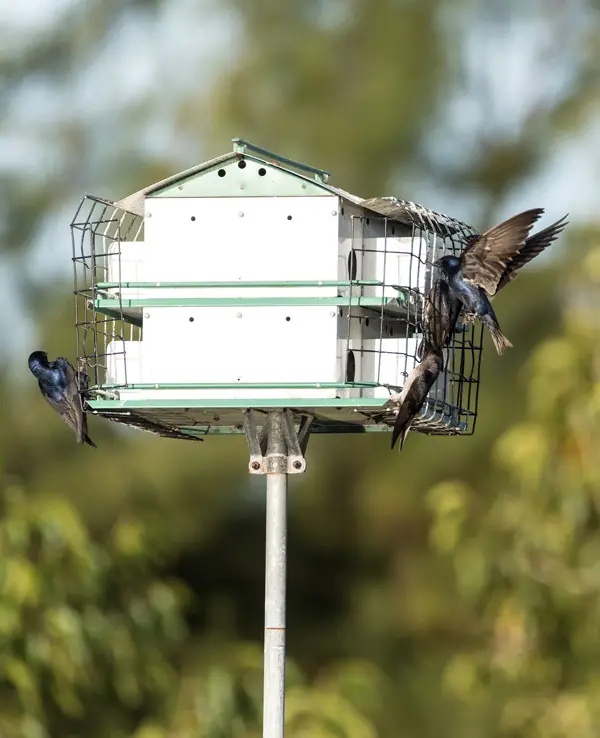Sign up For our Newsletter and get 15% off your First Order
By submitting I accept the Privacy Policy of Consider The Birds
Enter your birthday when prompted to join our FREE birthday club.
By submitting I accept the Privacy Policy of Consider The Birds
Enter your birthday when prompted to join our FREE birthday club.
The market is booming! Welcome to the neighborhood!
There are almost fifty species of North American birds, such as the Eastern Bluebird, House Wren, Chickadee, several woodpecker species, Nuthatch, Purple Martins and Tree Swallows that will nest in birdhouses. Each house should be designed for the particular type of bird you want as your favored tenant. Providing a home for a variety of bird species not only looks picturesque in your garden, but is also inviting and friendly to the natives of your area, assuring that they will keep visiting and may even stay.
Birdhouses, a/k/a Nesting Boxes, provide a safe place for birds to build their nests, protected from the elements and from the neighborhood riff-raff. Providing a place for birds to snuggle together to keep warm in the winter may cause them to remain in your area to enhance the environment of your garden in the Spring. As such, you will benefit in the birds’ ability to eliminate (as in devour) unwanted pests, control weeds (birds think they’re yummy), pollinate flowers, and conserve native plants.
The Importance of birdhouses can’t be over-emphasized. Using several nest boxes of different sizes with varying entrance holes will give you the best chance at filling your yard up with nesting birds that will give you hours of viewing pleasure and cut down on the necessary care of your garden sanctuary.

Our architects are all right here in the USA creating 100% U.S.-made bird houses for our native feathered friends.
Here we go…
Bluebirds are one of the most sought-after tenants, but they need to be protected from potential predators. The size of the house, the size and placement of the entrance hole, the interior floor space, and the slope of the roof are all critical elements that should be considered in choosing the right house for this most favored of boarders.
Birds start looking for a place to nest in very early spring, so be sure the house is on the market and ready for viewing early in the season. Natural wood, weathered nesting boxes with drainage holes on the bottom and ventilation holes to bring in fresh air are best. Most backyard birds like a compact house and every nesting box needs to have a clean-out door.
To have a success in attracting a variety of songbirds, the correct dimensions and entrance hole sizes must be chosen for each type of bird. In this way, you can provide a cool, dry, sturdy, easily-cleaned box for any of the small to medium-sized Songbirds.
The Roosting Box is the perfect way to provide valuable shelter for birds during Fall and Winter. It becomes a shelter and ‘bedroom’ for itinerants passing through who stop at your bird feeders and birdbaths to refuel and refresh themselves as they migrate. It can be a more permanent respite for the locals who prepare to spend the winter in town.
It’s important to place your hummingbird’s new house in a place where it is sheltered from wind or a downpour to mimic their natural nesting habits. Hummingbirds make their nests out in the open in the fork of the branches of a tree using cotton fiber, spider silk, and fluffy material from plant downs or seedpods giving their nests a soft, elastic, velvety structure.
Purple Martins like to nest in groups. In the eastern United States, Purple Martins readily adapt to habitats created by people and are almost entirely dependent on birdhouses. They are the most desirable wild bird species in America having over one million people in the USA providing their housing.